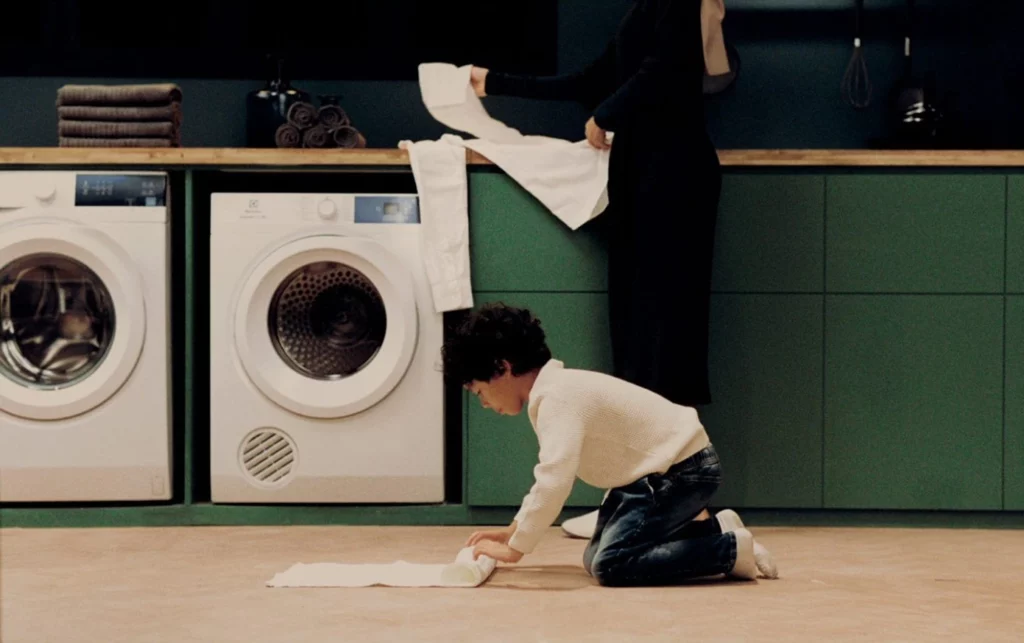
Circular Economy in Education เรื่องเศรษฐกิจหมุนเวียนกับสถาบันการศึกษา ถือเป็นเรื่องสำคัญมากในตอนนี้ เพราะสถาบันการศึกษาก็สามารถสร้างความเปลี่ยนแปลงผ่านการเรียนการสอนให้กับนักศึกษา รวมไปถึงการทำกิจกรรมต่างๆ เพื่อนำไปสู่เศรษฐกิจหมุนเวียน หรือ Circular Economy in Education ได้เช่นกัน ในบทความนี้ เราจะมาทำความเข้าใจกันว่า สถาบันการศึกษา หากสนใจอยากจะทำเรื่องเศรษฐกิจหมุนเวียน จะเริ่มต้นทำได้อย่างไร?
ช่วงเวลานี้เป็นนาทีที่ทุกสถาบันการศึกษาหรือแทบทุกสถานที่กำลังหันกลับมาทบทวนบทบาทของตัวเองที่มีต่อประเด็นในเรื่องของสิ่งแวดล้อม สาเหตุก็เนื่องจากอุณหภูมิของโลกกำลังเพิ่มสูงขึ้นราวกับจะแผดเผากันให้เนื้อสุก หรือปัญหามลพิษทางอากาศที่กำลังจะฆ่าประชากรบนโลกแบบเงียบๆ ความเปลี่ยนแปลงในเชิงลบมากมายที่เกิดขึ้นทำให้ทั่วโลกต้องหาทางปรับเปลี่ยนพฤติกรรมและขับเคลื่อนทางสิ่งแวดล้อมเพื่อรับผิดชอบต่อสังคมและโลกกันมากขึ้น
มหาวิทยาลัย หรือสถาบันการศึกษาก็เป็นอีกหนึ่งกลุ่ม ที่มีบทบาทในการเพาะบ่มประชากรออกมาให้มีคุณภาพ และเป็นสถานที่ที่มีประชากรรวมตัวกันเป็นจำนวนมาก มหาวิทยาลัยจึงกลายเป็นสถานที่ที่เหมาะสมมากเช่นกัน หากต้องการขับเคลื่อนเศรษฐกิจหมุนเวียนให้เกิดขึ้นได้จริงๆ เรามาลองดู 10 วิธีการตัวอย่างดังต่อต่อไปนี้ ซึ่งเป็นวิธีการที่มหาวิทยาลัยต่างๆ ทั่วโลกที่ได้มีการนำหลักการเศรษฐกิจหมุนเวียนมาใช้ในการดำเนินงานประจำวันได้อย่างประสบความสำเร็จมาแล้ว
1. การสร้างกรณีศึกษาให้เห็นภาพในรั้วมหาวิทยาลัย:
ภายในรั้วมหาวิทยาลัยเป็นพื้นที่ที่สามารถมุ่งเน้นในเรื่องอาหาร พลังงาน การใช้น้ำ ขยะชีวภาพ และเศษอาหารได้ เมื่อลองจับคู่พฤติกรรมกับผลลัพธ์ที่ได้ทั้งส่วนที่ดีและไม่ดีจะทำให้เราเห็นความจำเป็นของการปรับเปลี่ยนที่เราสามารถทำได้ ยกตัวอย่างเช่น การขับเคลื่อนของมหาวิทยาลัยเมลเบิร์น เขาปรับเปลี่ยนอาคารใหม่ทุกหลังให้ผ่านเกณฑ์การออกแบบให้กลายเป็น Green Office ระดับ 5 ดาว ส่งผลให้การใช้พลังงานภายในอาคารลดลงถึง 24% ลดการปล่อยคาร์บอนที่เกิดจากการใช้พลังงานได้ถึง 49% ลดการใช้น้ำ 38% และมีการรีไซเคิลขยะเพิ่มขึ้น 41%

อีกหนึ่งตัวอย่างการขับเคลื่อนที่น่าสนใจ คือ มหาวิทยาลัยนอร์ธแคโรไลนา พวกเขามีโครงการหลังคาสีเขียว จากการเก็บข้อมูลทำให้เห็นว่าการปล่อยก๊าซเรือนกระจกที่เกิดจากอาคารส่วนงานลดลง 12% การใช้พลังงานลดลง 33% นอกจากนี้ขยะกว่า 42% ได้รับการจัดการอย่างถูกต้อง มีการบริโภคอาหารท้องถิ่นหรือระบบอาหารประเภทยั่งยืนเพิ่มขึ้น 25% และมีการบริโภคอาหารจำพวกออร์แกนิกเพิ่มขึ้นอีก 13% ด้วย
2. Furniture as a Service:
ตั้งแต่หอพักในมหาวิทยาลัยตลอดจนห้องเรียน อาคาร หรือสถานที่ให้บริการนิสิตนักศึกษาต่างๆ เฟอร์นิเจอร์เป็นส่วนของประกอบก้อนใหญ่ของต้นทุนที่มหาวิทยาลัยต้องลงทุน ซึ่งหากเฟอร์นิเจอร์เหล่านั้นสามารถเปลี่ยนแปลงรูปแบบการซื้อขายให้กลายเป็น Product as a Service Model ผลิตภัณฑ์ในรูปแบบการบริการ สามารถผลิตซ้ำหรือผลิตใหม่ด้วยข้อเสนอซื้อคืน และให้บริการในเรื่องรับประกับการซ่อมแซม จะทำให้มหาวิทยาลัยลดต้นทุนในเรื่องเฟอร์นิเจอร์ไปได้ แถมยังลดผลกระทบสิ่งแวดล้อมและสร้างคุณค่าทางสังคมเนื่องจากการสร้างโอกาสในการทำงานในท้องถิ่นได้อีกด้วย

3. ระบบการคืนมัดจำสำหรับแก้วและภาชนะใส่อาหาร:
มาตรการนี้เป็นสิ่งที่เราพูดถึงมาโดยตลอด การใช้แก้วหรือภาชนะสำหรับใส่อาหารที่สามารถใช้ซ้ำได้แทนการบรรจุภัณฑ์ประเภทพลาสติกที่ใช้แล้วทิ้งเลย จะช่วยลดการสร้างขยะและผลกระทบต่อสิ่งแวดล้อมที่เกี่ยวข้องได้ สิ่งนี้จะทำหน้าที่เป็นเครื่องมือในการสร้างความตระหนักรู้และเป็นสิ่งที่นิสิตและบุคลากรสามารถยื่นมือเข้ามามีส่วนร่วมได้อย่างง่าย พวกเขาอาจโดนจูงใจด้วยส่วนลดหรือข้อเสนอสุดพิเศษ เช่น หากนำแก้วหรือภาชนะมาเอง จะได้รับส่วนลดค่าเครื่องดื่ม 5 บาท หรือพกแก้วมาเอง 10 ครั้งได้รับเครื่องดื่มฟรี 1 แก้ว เป็นต้น

4. Circular Appliances:
เครื่องซักผ้าหยอดเหรียญที่มีอยู่แทบทุกหอพักนักศึกษา หรือหลายคนคงเคยเห็นเครื่องดูดฝุ่น ตู้เย็น กาน้ำร้อน หรือไมโครเวฟที่เป็นของส่วนรวมแต่ไม่ได้ถูกใช้งาน สิ่งของเหล่านี้เป็นผลิตภัณฑ์ที่ถูกมองข้ามทั้งหมด เพราะเอาเข้าจริงแล้วสิ่งของเหล่านี้เป็นผลิตภัณฑ์ที่ช่วยประหยัดทางเศรษฐกิจและสิ่งแวดล้อมอย่างมาก ผลิตภัณฑ์พวกนี้ไม่ใช่ของที่ใครคนใดคนหนึ่งจะใช้ตลอดเวลา การลดจำนวนอุปกรณ์เหล่านี้แล้วหันมาใช้ร่วมกันจะช่วยให้ประหยัดเงิน พลังงาน และสร้างความตระหนักการใช้อุปกรณ์ทุกอย่างอย่างคุ้มค่า

5. การให้แสงสว่างในฐานะการบริการ:
การให้บริการด้านแสงสว่างอาจมีบทบาทสำคัญในการช่วยให้เศรษฐกิจหมุนเวียนเติบโตในอุตสาหกรรมแสงสว่าง โดยเฉพาะในระดับมหาวิทยาลัย รูปแบบธุรกิจของเหล่าบริษัทที่ให้บริการในด้านแสงสว่างในปัจจุบันค่อนข้างแปลกใหม่ หลากหลายและสร้างสรรค์ การให้บริการของพวกเขามาพร้อมกับการประหยัดพลังงานและต้นทุนให้กับมหาวิทยาลัยด้วย การปรับเปลี่ยนกลไกบางอย่างเพื่อเพิ่มความสะดวกสบายและสร้างโครงการสำหรับการใช้ระบบแสงสว่างส่วนตัวในหอพักนิสิตนักศึกษาจะทำให้มหาวิทยาลัยสามารถลดจำนวนต้นทุนสำหรับแสงสว่างภายในรั้วมหาวิทยาลัยได้อีกเยอะเลย
6. จัดหาเงินทุนสำหรับนวัตกรรมหมุนเวียนในมหาวิทยาลัย:
กองทุนหมุนเวียนสำหรับนักศึกษาและนักวิจัยเพื่อเริ่มต้นโครงการบนพื้นฐานของเศรษฐกิจหมุนเวียนสามารถทำหน้าที่เป็นศูนย์บ่มเพาะสำหรับการสร้างมาตรการที่สร้างความยั่งยืนได้ ยกตัวอย่างเช่น การซ่อมแซมสิ่งอำนวยความสะดวก สินค้าอิเล็กทรอนิกส์สามารถจูงใจนิสิตนักศึกษาได้ สิ่งนี้ไม่ได้ยากสำหรับมหาวิทยาลัยเลย สิ่งที่ต้องทำก็มีเพียงแค่การเตรียมพื้นที่เพื่อให้นิสิตสามารถดำเนินการค้นคว้าในพื้นที่นั้นได้อย่างสะดวก ยกตัวอย่างเช่น มหาวิทยาลัยวอชิงตัน นักศึกษาจะเป็นผู้นำโครงการต่างๆ เข้ามาผ่านกองทุนเพื่อความยั่งยืนของมหาวิทยาลัย โดยได้รับรางวัลตั้งแต่ 250 ถึง 100,000 ดอลลาร์สหรัฐในการทำการค้นคว้าที่มีประโยชน์เหล่านั้น ผลลัพธ์ที่ได้คือทางมหาวิทยาลัยมีงานวิจัยที่สามารถช่วยให้ลดก๊าซคาร์บอนไดออกไซด์ที่เกิดจากมหาวิทยาลัยได้กว่า 8% มีการบริโภคอาหารที่ยั่งยืนเพิ่มขึ้น 59% และขยะกว่า 58% ได้รับการฝังกลบอย่างถูกต้อง
7. พัฒนาศูนย์กลางนวัตกรรม:
ศูนย์กลางนวัตกรรมเฉพาะภายในมหาวิทยาลัยสามารถช่วยรวบรวมนักวิจัยและผู้ปฏิบัติงานจากทุกภาคส่วนที่มีศักยภาพและความคิดสร้างสรรคเพื่อแลกเปลี่ยนความคิดเห็นและความถนัดเพื่อสรรสร้างนวัตกรรมที่สนับสนุนผลิตภัณฑ์หรือรูปแบบที่ช่วยแก้ปัญหา MIT Office of Sustainability (MITOS) หรือมุ่งหาวิธีลดของเสียและป้อนเศรษฐกิจเพื่อพัฒนาทางแก้ปัญหามากมาย ที่สำคัญคือมีส่วนช่วยในการเปลี่ยนแปลงระบบของเสียภายในมหาวิทยาลัยได้
8. การสอนและการวิจัย:
มหาวิทยาลัยเป็นสถานที่ให้ความรู้ที่จำเป็นสำหรับประชากรทุกคน อีกทั้งการแก้ปัญหา เทคโนโลยี แนวทางและนวัตกรรมเพื่อสนับสนุนการดำเนินการของเศรษฐกิจหมุนเวียนได้ สามารถกล่าวได้ว่ามหาวิทยาลัยเป็นที่เสริมสร้างศักยภาพของประเทศ มีการร่วมมือและสนับสนุนบริษัทนวัตกรรมเพื่อหาทางแก้ปัญหา อบรม และให้โอกาสในการศึกษาวิจัยเพื่อการพัฒนาที่ยั่งยืน มหาวิทยาลัยหลายแห่งใช้แนวคิดเศรษฐกิจหมุนเวียนทั้งการสอนและการวิจัย ซึ่งอาจมีการดึงนักศึกษามาร่วมกันออกแบบ ธุรกิจ สิ่งแวดล้อม และรูปแบบอื่นของการสอนและการวิจัยภายในรั้วมหาวิทยาลัยอีกด้วย
9. ความเชื่อมโยงทางอุตสาหกรรม:
มหาวิทยาลัยเป็นศูนย์กลางของนวัตกรรม การประดิษฐ์ และการค้นพบ และมีบทบาทในการพัฒนาเทคโนโลยีที่สำคัญเกือบทุกแห่ง ด้วยเหตุนี้ มหาวิทยาลัยจึงสามารถขยายบทบาทของตนในการเป็นศูนย์กลางของนวัตกรรมเพื่อสนับสนุนและเป็นจุดริเริ่มธุรกิจต่างๆ เช่น บริษัทสตาร์ทอัพที่มีเทคโนโลยีสูงซึ่งทำงานเกี่ยวกับโครงการวิจัยของมหาวิทยาลัย ซึ่งจัดหาเทคโนโลยีและบริการมาเพื่อการพัฒนาที่ยั่งยืน นอกจากนี้มหาวิทยาลัยยังสามารถเริ่มต้นความร่วมมือกับธุรกิจในท้องถิ่นซึ่งจะช่วยให้สามารถแบ่งปันผลประโยชน์และสนับสนุนสองทางด้วยการดำเนินการและการจัดหาเงินทุนอีกด้วย
10. ทำงานร่วมกันและยอมรับ:
เพื่อส่งเสริมความคิดในมหาวิทยาลัย การอบรมที่รวมนิสิตและบุคลากรเข้ากับชุดวิทยากรที่มีความรู้เกี่ยวกับเศรษฐกิจหมุนเวียนจะสร้างการแลกเปลี่ยนความรู้และนำไปสู่ความร่วมมือในการเสริมสร้างศักยภาพผ่านการศึกษา ซึ่งการทำงานร่วมกันยังพบว่าเป็นวิธีที่มีประสิทธิภาพในการทำงานกับความท้าทายที่เศรษฐกิจกำลังพัฒนาเผชิญหน้าอยู่ ในขณะที่มหาวิทยาลัยมีการเชื่อมโยงอย่างกว้างขวางไปยังประเทศกำลังพัฒนาหลายแห่งผ่านนักศึกษาต่างชาติและศิษย์เก่า วิทยาเขตนานาชาติ โครงการแลกเปลี่ยนทางวิชาการ การดูงาน และความร่วมมือกับมหาวิทยาลัยในประเทศกำลังพัฒนา ซึ่งทั้งหมดนี้สามารถสร้างความเปลี่ยนแปลงด้านเศรษฐกิจหมุนเวียนให้กับมหาวิทยาลัยในทางที่ดีขึ้นได้
บทสรุป
ในช่วงเวลาที่ผ่านมาต้องยอมรับเลยว่ามหาวิทยาลัยเป็นที่ผลิตประชากรที่มีคุณภาพและงานวิจัยที่เป็นประโยชน์ต่อโลกเป็นจำนวนมาก วิวัฒนาการ นวัตกรรม หรือทฤษฎีใหม่หลายอย่างถูกค้นพบภายในรั้วมหาวิทยาลัยทั่วโลก เพราะฉะนั้นหากเราอยากจะทบทวนบทบาทในเรื่องการขับเคลื่อนมาตรการบางอย่างเพื่อโลก การเริ่มต้นจากแหล่งรวมประชากรที่มีคุณภาพและทรัพยากรที่พร้อมอย่างมหาวิทยาลัยก็ถือเป็นความคิดที่ดีเป็นอย่างมาก
มหาวิทยาลัยเป็นสถานที่ที่เข้าถึงคนหนุ่มสาวยุคใหม่ คนขี้สงสัย และคนที่มีความกระตือรือร้นบวกความคิดสร้างสรรค์จำนวนมาก ซึ่งพวกเขาล้วนมีความปรารถนาในโลกที่ดีกว่าเดิมกันทั้งสิ้น เมื่อสังคมให้ความสำคัญกับการเปลี่ยนแปลงเพื่อก้าวเข้าสู่โลกที่ดีกว่า มหาวิทยาลัยจึงเป็นสถานที่ที่ดีที่สุดที่นึงเลยเมื่อคุณพูดถึงเรื่องการขับเคลื่อนเศรษฐกิจหมุนเวียน
Reference:
10 ways how Universities can lead the way towards Circular Economy







